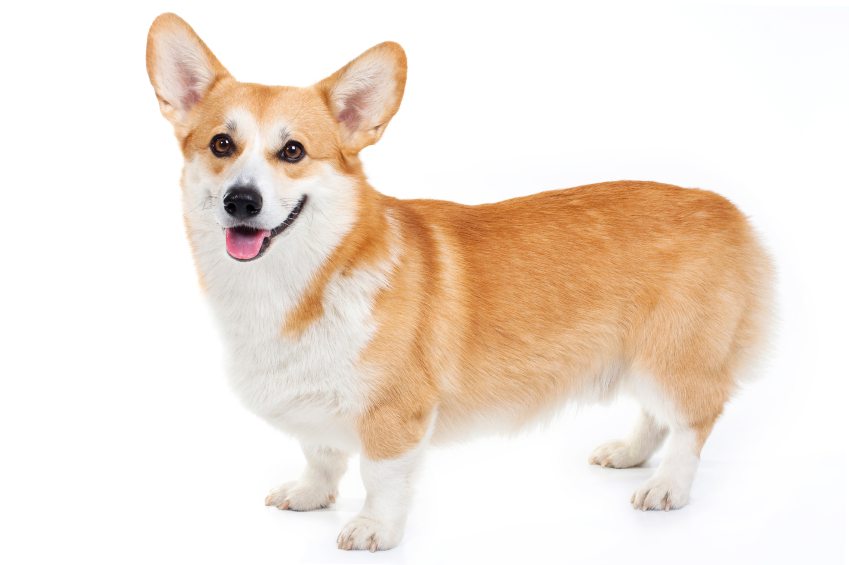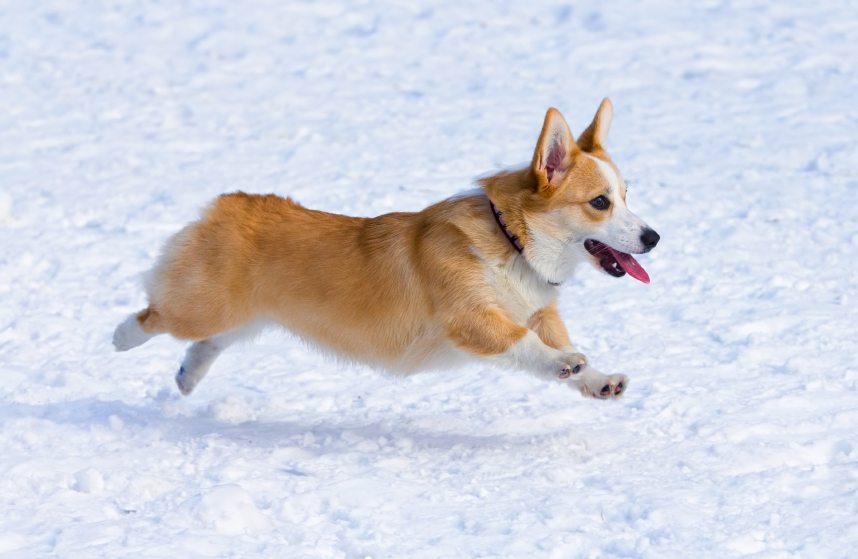

This cute little dog, with his cartoonishly short legs is a bundle of energy and personality; is he the guy for you? Read on to find out more about this little herding dog.
The History of the Welsh Corgi
There are two distinct types of the Welsh Corgi, those being the Cardigan Welsh Corgi and the Pembroke Welsh Corgi. It is said that the Cardigan came first, and then the Pembroke as a descendent of the Cardigan, and both are considered possible descendants of the Keeshond, Pomeranian, and the Schipperkes.
The breed is quite old, having been brought to the Welsh Celts by Flemish weavers in 1107. Both the Cardigan and Pembroke were considered one and the same breed until 1934 when the AKC deemed them two separate breeds, giving recognition to the Pembroke in 1934 and the Cardigan in 1935. Historically the Corgi was used to herd cattle, hunt vermin, and guard the farm.
Appearance
Although the Corgi may be described as “long,” this designation is actually an optical illusion of sorts. The back of the Corgi is actually relatively the same length in proportion to other dogs; however, because of the Corgi’s short legs, he appears to be longer than normal. They are approximately 10 – 12 inches tall at the shoulder, weigh in around 30 pounds, and come in several colors, including red, sable, fawn, black and tan with or without white markings. They have large, erect ears and a double coat, that is shed twice a year. The major difference between the Cardigan and Pembroke Corgis is the tail. Pembrokes have, if any, a very small tail this is normally docked in puppyhood and the Cardigan has a traditional full tail.


Personality of the Corgi
The Pembroke Welsh Corgi is outgoing, intelligent loving, and easy to train, but they can be strong-willed so Corgi parents must be consistent with training. Early socialization to other dogs and animals is high suggested. They are good with children, and tend to always want to be with the family – they are affectionate. These dogs are very alert so they usually make great watch dogs. With a tendency to overeat, close monitoring is needed to prevent obesity, which can cause many health problems. Your Corgi may try to herd you or your guests but can, and should be trained not to do this.
Health Concerns
Pembroke Welsh Corgis can be afflicted with several eye problems including, cataracts, Progressive Retinal Atrophy which causes eventual blindness, and Retinal Dysplasia, which causes abnormal development of the retina and can lead to blindness also. Hip Dysplasia is common and hereditary, so your breeder should screen your puppie’s parents for this condition to rule it out.
Back problems are also common. Both Degenerative Myelopathy and Intervertebral Disk Disease can cause paralysis. Corgis can also develop Epilepsy, which causes seizures.
Training
The Pembroke Welsh Corgi is one of the easiest breeds to train due to their great intelligence. They love to please you, so this is another plus, but they do become bored easily, and if pushed beyond that limit may go backwards. To offset this, simply limit the daily training time in order to keep the excitement going.
Grooming
Grooming the Pembroke Welsh Corgi is fairly simple. Weekly brushing should be adequate for all but the two major sheds per year. During this period parents may want to brush every day to keep the amount of hair on furniture and carpets in check. Bathing can be done on an as needed basis.
What Type of Family for a Corgi?
The Corgi makes a wonderful family pet; it plays well with children, but keep in mind these little dogs require daily physical and mental exercise, so families too busy with outside activities and seldom home are not ideal for the Corgi, but in the right environment they are one of the best family dogs around.
Adopt A Purebred Corgi
Please consider adopting before purchasing and please avoid purchasing an animal from a pet store. There are plenty of pure bred Corgis in need of good homes. Click here to search for you a Corgi in need of adoption near you: <Petfinder>
Photo Credit: istockphoto.com
